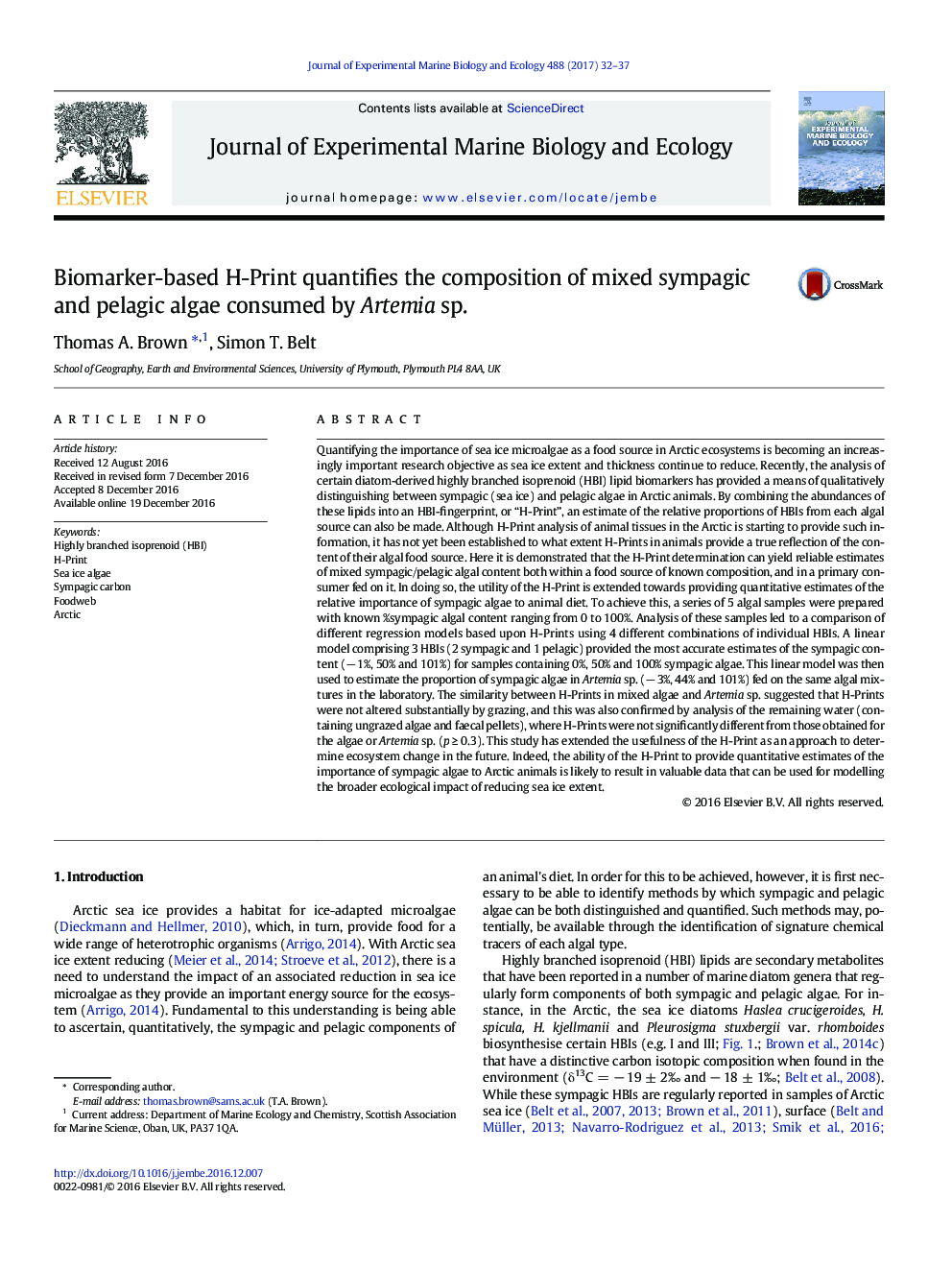| کد مقاله | کد نشریه | سال انتشار | مقاله انگلیسی | نسخه تمام متن |
|---|---|---|---|---|
| 5744560 | 1618387 | 2017 | 6 صفحه PDF | دانلود رایگان |

- A regression model defines the relationship between algal composition and H-Prints.
- Algae H-Prints remain unchanged following grazing of algae by zooplankton.
- H-Print offers quantitative estimates of sympagic/pelagic component of animal diet.
Quantifying the importance of sea ice microalgae as a food source in Arctic ecosystems is becoming an increasingly important research objective as sea ice extent and thickness continue to reduce. Recently, the analysis of certain diatom-derived highly branched isoprenoid (HBI) lipid biomarkers has provided a means of qualitatively distinguishing between sympagic (sea ice) and pelagic algae in Arctic animals. By combining the abundances of these lipids into an HBI-fingerprint, or “H-Print”, an estimate of the relative proportions of HBIs from each algal source can also be made. Although H-Print analysis of animal tissues in the Arctic is starting to provide such information, it has not yet been established to what extent H-Prints in animals provide a true reflection of the content of their algal food source. Here it is demonstrated that the H-Print determination can yield reliable estimates of mixed sympagic/pelagic algal content both within a food source of known composition, and in a primary consumer fed on it. In doing so, the utility of the H-Print is extended towards providing quantitative estimates of the relative importance of sympagic algae to animal diet. To achieve this, a series of 5 algal samples were prepared with known %sympagic algal content ranging from 0 to 100%. Analysis of these samples led to a comparison of different regression models based upon H-Prints using 4 different combinations of individual HBIs. A linear model comprising 3 HBIs (2 sympagic and 1 pelagic) provided the most accurate estimates of the sympagic content (â 1%, 50% and 101%) for samples containing 0%, 50% and 100% sympagic algae. This linear model was then used to estimate the proportion of sympagic algae in Artemia sp. (â 3%, 44% and 101%) fed on the same algal mixtures in the laboratory. The similarity between H-Prints in mixed algae and Artemia sp. suggested that H-Prints were not altered substantially by grazing, and this was also confirmed by analysis of the remaining water (containing ungrazed algae and faecal pellets), where H-Prints were not significantly different from those obtained for the algae or Artemia sp. (p â¥Â 0.3). This study has extended the usefulness of the H-Print as an approach to determine ecosystem change in the future. Indeed, the ability of the H-Print to provide quantitative estimates of the importance of sympagic algae to Arctic animals is likely to result in valuable data that can be used for modelling the broader ecological impact of reducing sea ice extent.
Journal: Journal of Experimental Marine Biology and Ecology - Volume 488, March 2017, Pages 32-37